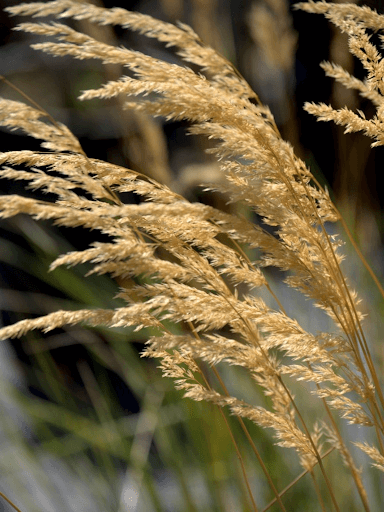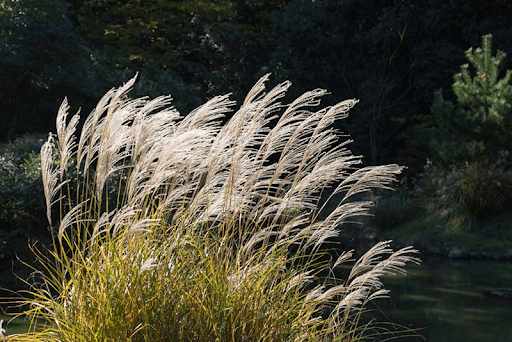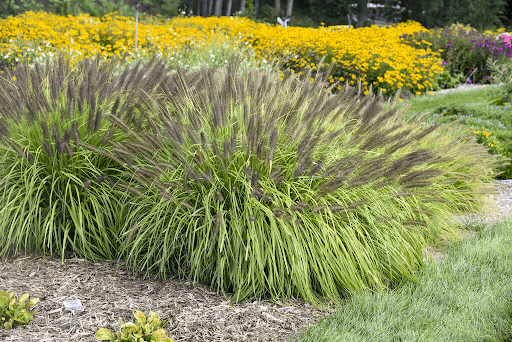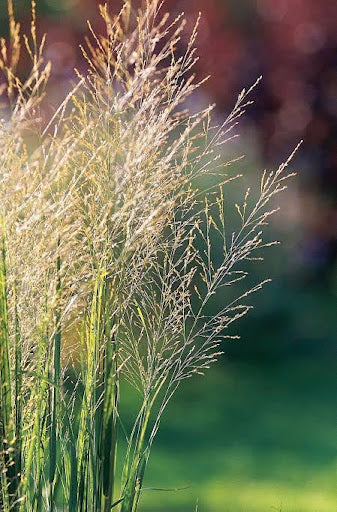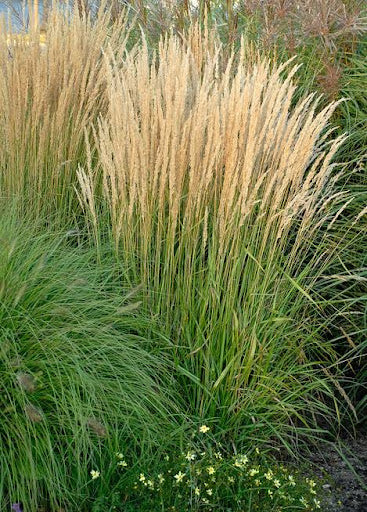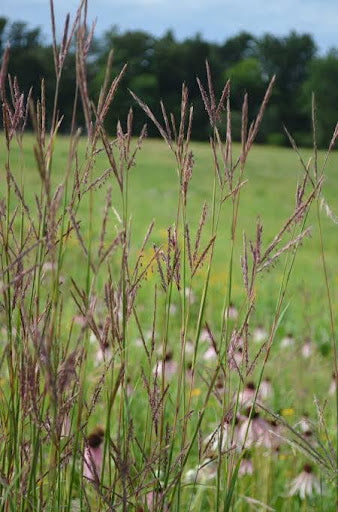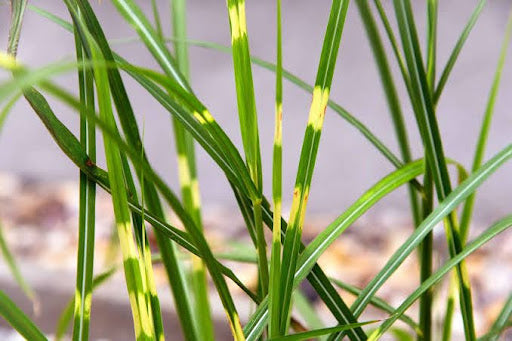1. Feather Reed Grass (Calamagrostis x acutiflora):
This Feather Reed Grass ornamental grass has a moderate growth rate. It reaches a mature height of 4-5 feet with a width spanning 2-3 feet. It grows well in full sun and tolerates partial shade. It displays lavish golden tan blooms from summer through fall. It is adaptable to various soil conditions. It is suitable for mass plantings, roadside landscapes, beds and borders, hedges, and waterfront regions. It exhibits resilience to cold and heat.



